AI in Digital Visual Arts: Exploring Creative Frontiers
The synergy of AI & 3D modelling has skyrocketed the world of digital visual arts to unprecedented heights. Artists and designers use machine learning algorithms and computer vision, together with AR/VR, to advance art exponentially. By bringing 2D models to life to intrigue audiences inside virtual reality, AI has revolutionised how we perceive, create and interact with visual content. In 2023, the global AI in entertainment market was valued at USD 19.52 billion and is estimated to grow at a CAGR of 26.1% during the forecast period.
Also, AI-generative technologies contribute to the cinematography, photography and video games for realistic graphics, adaptive storytelling and alluring gameplay experiences. Anna Ridler, an artist, harnesses AI-powered algorithms to create digital art and uses the intersection of nature and technology themes. As we navigate through the intricate interplay of pixels and algorithms, the following sections will unfold the multifaceted impact of AI on 3D printing, cinema, photography, and digital art creation.
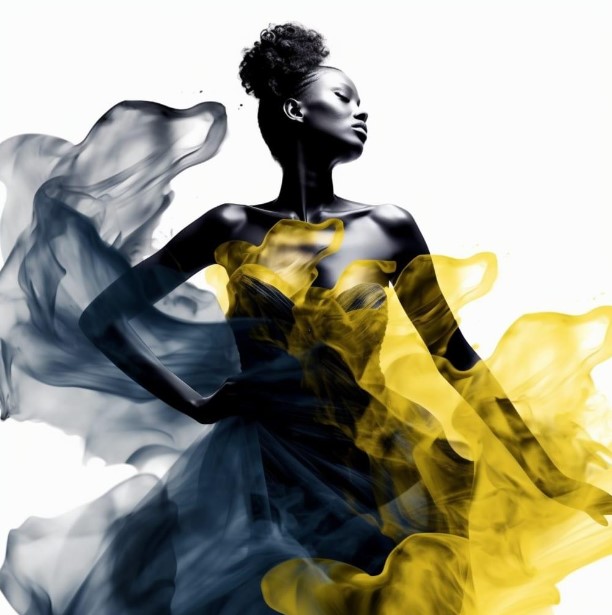
Use Cases
AI-generated 3D Modelling for Virtual Reality
AI acts as a digital artist, crafting 3D objects to create VR environments that blur the line between the virtual and real. These models are not just static replicas but dynamic, lifelike spaces that captivate our senses. This use case unravels some high-tech tools such as computer vision, which is the equivalent of AI’s eyes, generative AI for its creative brain and GPU acceleration – an engine that makes everything run smoother.
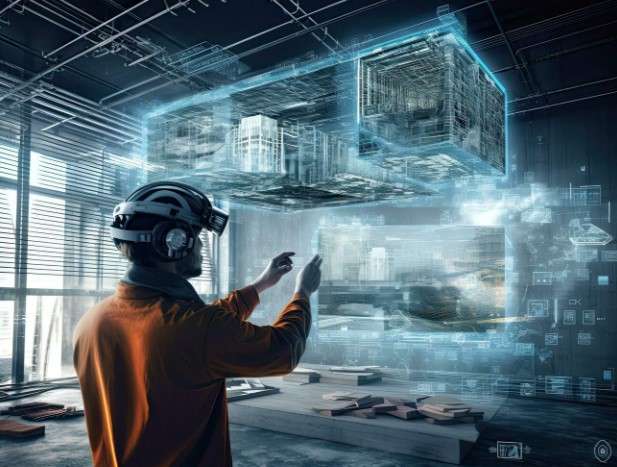
Computer Vision in VR Creation
Imagine putting a VR headset on and thinking that you are actually in a real-world simulation. AI, using computer vision, makes this possible. It crunches data from cameras to recreate spaces in a way that’s almost indistinguishable from reality. For instance, Google Earth VR utilises AI-enhanced 3D modelling to accurately recreate real-world environments. This has led to an increase in user engagement by 50% since the introduction of AI-enhanced features.
It also uses Computer Vision to look at 3D models and make them super accurate. This helps create these awesome, lifelike places in the virtual world. This visual data analysis ensures that the virtual environments crafted are realistic and exhibit a level of detail that meets the highest artistic standards.
Generative AI & GPU Acceleration’s Creative Assistance
Also, AI uses Generative AI. It not only polishes up existing 3D art but also comes up with new and interesting things to add. It’s like a creative assistant helping artists make their virtual creations even more exciting. To make sure everything happens in a snap, AI uses GPU Acceleration. This is like giving AI a speedy engine. With this, the 3D models get shown in the virtual world in real time.
With seamless integration of Generative AI and GPU Acceleration, AI art empowers artists and digital creators to add new dimensions of creativity. In simple terms, AI is like the behind-the-scenes hero, turning time-consuming 3D models into extraordinary experiences in Virtual Reality. It’s like bringing dreams to life in a whole new digital dimension!
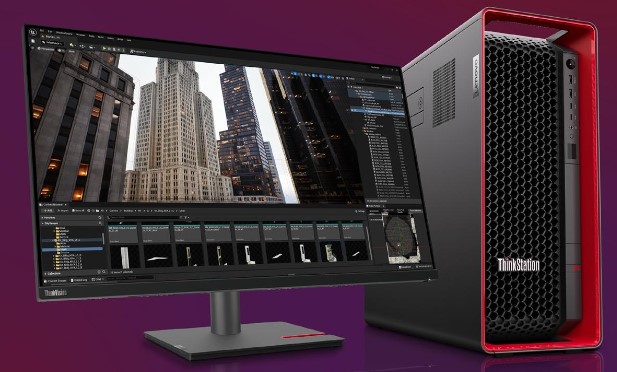
Transforming Textual Instructions into Visual Art with NLP
Artists, whether they’re painters or digital wizards, can simply tell the computer what they want. Thanks to NLP, the computer understands these words, almost like having a conversation. It translates the artist’s instructions into visual elements, creating digital art that mirrors the artist’s thoughts. This allows digital artists to communicate their ideas more naturally. Instead of clicking and dragging, they can just say how to make the sky deep blue with fluffy clouds.
However, artists are able to use their traditional art skills and incorporate some AI-generated features. For instance, they may have an old portrait but opt to incorporate a few AI-produced 3D details. It’s about fusing the best of two different worlds into one novel and innovative creation.
Runway ML connects several machine learning models to frameworks for creative work. It offers the capabilities of NLP and Generative AI to transform textual guidance into visual art, and is available for use by artists and creators. Users can create images based on the text description by using models supported by this platform, enabling them to articulate their creative thoughts through natural language.
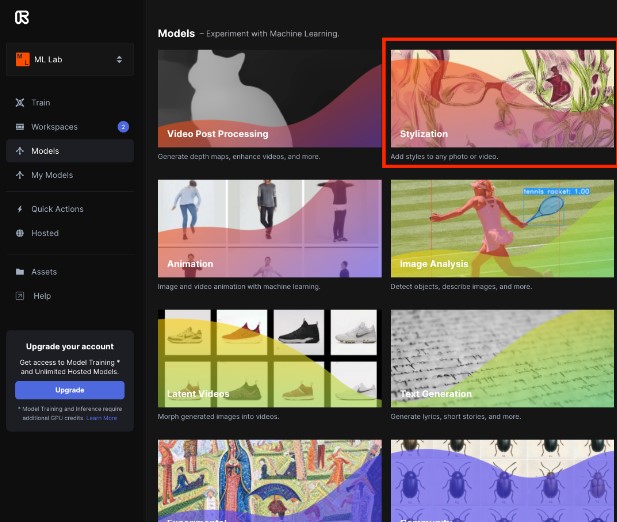
Digital Painting Using AI Tools in Adobe Photoshop
Suppose you are interested in editing your graphic picture in Adobe Photoshop. With the help of AI-powered Computer vision, a digital art analyser detects elements such as colours, forms and textures in real time. Based on this analysis, Adobe Photoshop will make smart recommendations, whether they are colour corrections, brush strokes, or even offer creative ideas based on your painting content. Therefore, artists can spend less time on monotonous duties and more time being creative.
The integration of Adobe Photoshop with NLP is yet another way to improve your digital painting by using voice or text commands. Instead of sifting through menus and settings, they can simply speak or type their commands, allowing for a more immersive painting experience. You can use voice commands like “add texture” or “apply artistic filter” to implement the requested changes onto your painting.
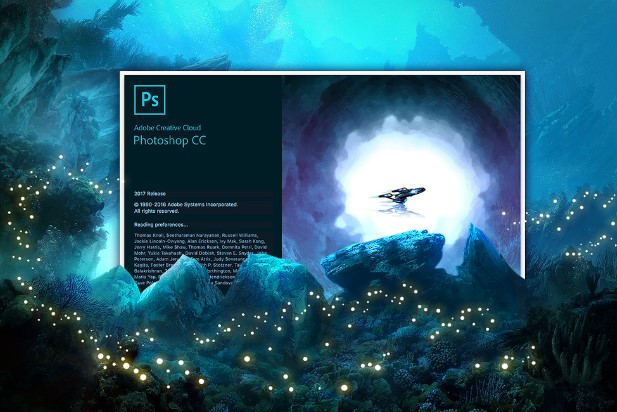
AI-generated Cinematography and Photography
AI is revolutionising the world of cinema, videos and photography, where camera angles are recommended by AI to artists so that they capture excellent images. The lights can also be adjusted in order for one to get an impeccable shot. This enables you to spend less time on technical stuff and focus more on creative work, like telling the story or catching that moment.
Computer Vision for Camera Angles & Lighting Adjustments
Computer Vision algorithms powered by AI capture real-time pictures, selecting core factors such as the subject matter or backgrounds and lighting conditions. These algorithms then use this data to provide the best camera angle and framing, which is critical in every shot because it tells a story. Also, it can process huge amounts of cinematographic techniques and styles to offer filmmakers more artistic information and suggestions on how to achieve specific visual effects or tones.
For example, Cinelytic applies computer vision algorithms to analyse scenes and predicts the commercial potential for movie projects. Cinelytic’s AI platform draws large databases of films such as box office performance, audience demographics and critics overviews, which help film producers and studios decide upon targeting their niche audiences. These understandings guide the film markers in their selection of cast, marketing strategies and distribution schedules, thereby ensuring high commercial value for their films.
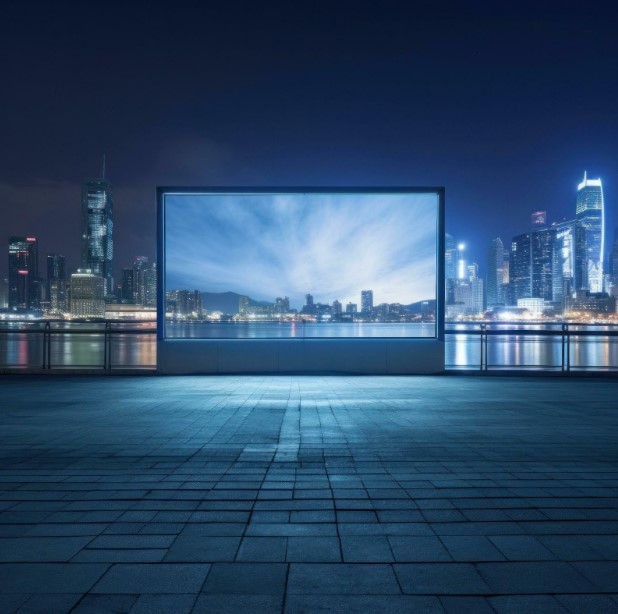
Deep Learning Models For Image Editing in Photography
Also, AI technologies such as deep learning and neural networks are vital in improving images easily with speedy professional-quality results. As deep learning algorithms can understand complex visual patterns, they can be trained to perform tasks like object removal, colour enhancement, or image restoration. On the other hand, neural networks serve as the spine of AI-based image editing software tools that allow functions such as content-aware fill and smartly fine edit images.
The software Luminar, developed by Skylum uses deep learning for automatic photo enhancement. It provides services such as ‘AI Sky Replacement’ that automatically detects and changes over skies in photos with more appealing images. However, Luminar’s “AI Enhance” uses neural networks to automatically modify a range of aspects within an image including: exposure level, colour balance and contrast ratio, achieving professional quality results with minimum manual intervention.
The Future of AI in 3D Printing for Artists.
Using 3D printing, you can make complex statues and other beautiful objects such as jewellery or functional items. As technology continues to develop, the integration of artificial intelligence (AI) and 3D printing is opening up a new world of creativity and innovation in the field of art. Along with the development of AI-generative technologies, including IoT edge computing and generative design, 3D printing is undergoing a transformation that will change how art is created.
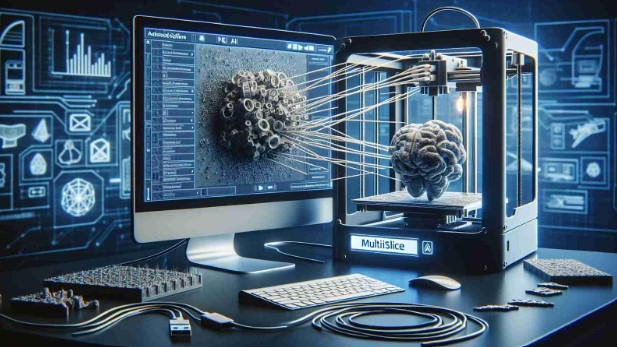
Now the 3D art is opting for IoT edge computing that acts like a mini-computer at the location of a 3D printer. It keeps an eye on things like temperature and material flow in real time. When some issue pops out, it makes the corrections on the spot to keep your print on track. This implies that you can count on each and every part of your 3D print. For artists and creators, the days of worrying about minor mistakes spoiling the end product are finally over!
Markforged’s IoT capabilities give users the ability to monitor and manage remotely, striving toward improved, optimised production workflows while minimising downtime costs to maintain a uniform print quality throughout their operations. Users can check the status of their prints live from anywhere in the world and view a live feed on camera, and receive prompt notifications about any issues or errors by automatically emailing support staff.
Personalised AR Interactions
Personalised AR art galleries achieve a blend of technology and artistic creativity that enables users to tailor their art journey via advanced technologies such as Computer Vision and Natural Language Processing (NLP). Through the adoption of these technologies, users can interact with personalised virtual artworks and enjoy highly interactive and engaging experiences.
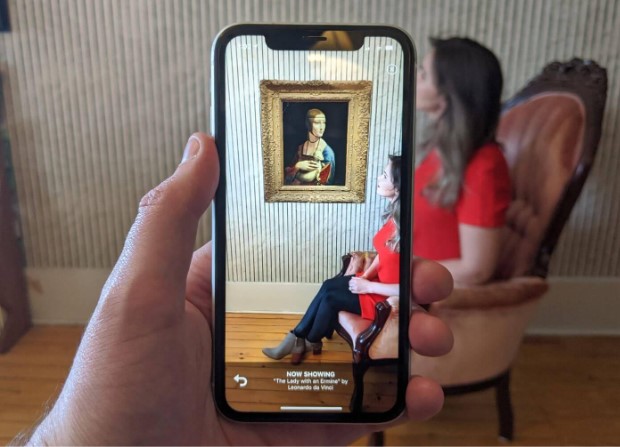
Imagine using your phone or special glasses to see art made just for you! With Computer Vision & Natural Language Processing (NLP), you can personalise AR art interactions based on your interests. Computer vision technology allows devices to “see” and analyse the real world around them, while NLP enables devices to understand what human beings are speaking. Overall, integrating these technologies helps your devices like smartphones or AR glasses understand what you like and create virtual art that matches your preferences.
Take the case of Art.com, an online art gallery that implements personalised AR features in its mobile app, allowing users to virtually place artworks in their homes using AR technology. Users can browse a huge inventory of art pieces and visualise how they would look in their living spaces before making the purchase. Customers are satisfied with this opportunity which led to increased user engagement rates and skyrocketing sales conversion.
Benefits
Artists have a secret weapon because their daily tasks become easier, and so does the quality of what they produce. Collaboration between artists and new AI-generative technologies such as computer vision, generative AI, and GPU acceleration can help artists create visual masterpieces by requiring only their ideas in a way that is faster than hand-drawn artworks but without losing any live features.
Boost Efficiency:
By uploading a 3D model or each brushstroke painted by hand, the process is lengthy and arduous. Implementing AI-generative tools can significantly increase productivity for artists who work faster than ever, getting things done within days if not hours. AI can perform repetitive tasks, such as generating 3D models or adding textures; this leaves artists to spend more time on the creative aspect.
Upsurge Creativity:
AI is not primarily about time-saving – artists can engage in a wide range of styles, apply innovative approaches and push their boundaries of imagination. From building surreal landscapes, modern cityscapes or imaginary beings, AI grants artists freedom of expression and takes their fantastic ideas beyond reality into a virtual world.
Reduce Errors:
Honestly, no one is perfect, and even a genius artist can fail. However, with AI, artists can reduce mistakes and produce more refined work. Errors are quickly detected, imperfections are corrected, and suggestions for improvements are sometimes even provided to ensure all units of digital art are perfect.
Enhance Collaboration:
Collaboration is necessary in the modern world; AI makes it easier than ever for artists to cooperate. AI artists can freely share their work online in real time and even crowdsource ideas from millions of people across the globe. This creates new room for collaborative work in digital art forms.
Challenges
When it comes to digital visual arts, it is expected to provide advantages; however, it comes with several challenges. Let us discuss some of the typical challenges of using AI for creative pursuits.
Preserving Artistic Intent:
Maintaining originality, assuring artwork still feels authorised by an artist. Given that AI can quickly create large volumes of content in a short time, there is also a danger in diluting the authenticity and creativity of an artist. For example, if we look at 3D modelling, it might prove hard for artists to include their handcrafted elements with computer-generated ones as a result, people will lose the personal touch of creation.
Ethical Considerations:
Ethical issues arise especially in the field of ownership, authorship as well as copyright. This situation may lead to questions about the ownership of produced artwork – is it human artist and/or AI that created such art? Further, applying AI-created content in business is prone to abuse or misuse.
Technical Challenges:
In 3D modelling and AI art generation, artificial intelligence algorithms may need more computational capacity and specialised knowledge to implement and develop effectively. Another challenge is making it compatible and interoperable with the pre-existing digital art tools and platforms.
Balancing Traditional Art with AI:
Many artists are passionate about traditional art techniques, as AI integration can feel like selling out their art. People fear AI will take away their art skills, so artists need to learn how to use artificial intelligence AI in their artworks and respect their craft traditions by adopting these technologies.
What Can Technolynx Offer You as a Software Company?
From the digital illustrator’s aspiration to produce compelling 2D or 3D illustrations to developing spectacular digital drawings or filmmakers wanting an immersive cinema and even photographers trying to create breathtaking moments; Technolynx offers AI solutions in the digital visual art world.
Technolynx provides digital artists with a pack of AI-driven creative tools, from cutting-edge image processing algorithms to generative AI models. Technolynx’s AI algorithms make content generation more streamlined and time-efficient. We can take care of the repetitive tasks freeing artists’ minds from unnecessary details and ensuring they can focus on their creative vision.
Technolynx defines a new way of combining AI and digital visual art by providing artists and designers worldwide with innovative opportunities to increase their creative work. At our core, the underlying skill set we leverage is through the use of cutting-edge technologies which enable the exploration of the limits of artistic expression.
Technolynx is a leader in AI using it to enhance creative work by artists and designers around the globe. Our advanced solutions, which are based on delivering personalised recommendations unique for everybody and their tastes and styles, allow artists to discover new forms of expression, giving rise to a comprehensive and enjoyable show.
Experience the future of digital art with Technolynx’s AI-powered solutions. Get started now!
Final Thoughts
In Conclusion, the article discusses the revolutionary role of AI in digital visual arts regarding 3D modelling . Innovative AI technologies include generative art algorithms and real-time collaborative tools that empower modern artists with the unparalleled ability to reveal creative depths that were virtually impossible before.
The ability of AI to transform the creative process is enormous, granting artists an unparalleled platform and potential access to extraordinary breakthroughs. Technolynx is working towards a new approach which is based upon AI-driven technology. Our goal is to keep innovating technological marvels which not only simplify the creative process but also intelligence towards lifting up creativity for artists around the globe.
We see a future that incorporates continuing explorations of AI use cases within the creative process and employs artificial intelligence as artists’ effective tool to turn their ideas to life. Let us work together and discover how AI is used in the future of digital artisans to rise with better intelligence by technologies.
References:
- Art.com (2019).
- Autodesk News. (n.d.). Autodesk and Airbus Demonstrate the Impact of Generative Design on Making and Building. [online] [Accessed 9 Feb. 2024].
- CBS News. (2019). Can AI predict box office gold? Startup company Cinelytic uses algorithms to suggest who ought to be in movies - CBS News. [online] [Accessed 9 Feb. 2024].
- markforged.com. (n.d.). Industrial 3D Printers: Strong Parts. Right Now | Markforged. [online] [Accessed 9 Feb. 2024].
- NVIDIA. (n.d.). AI Artist Anna Ridler [online]
- Polaris. (n.d.). AI in Media and Entertainment Market Size, Research, 2024-2032. [online] [Accessed 9 Feb. 2024].
- Runway. (n.d.). Runway | Make the Impossible. [online]
- skylum.com. (n.d.). Luminar AI - AI photo editing for Mac & PC | Skylum. [online]
- The Times of India. (2023). How does Google Earth capture incredible 3D imagery: Explained. [online] 18 Apr.
Related Posts
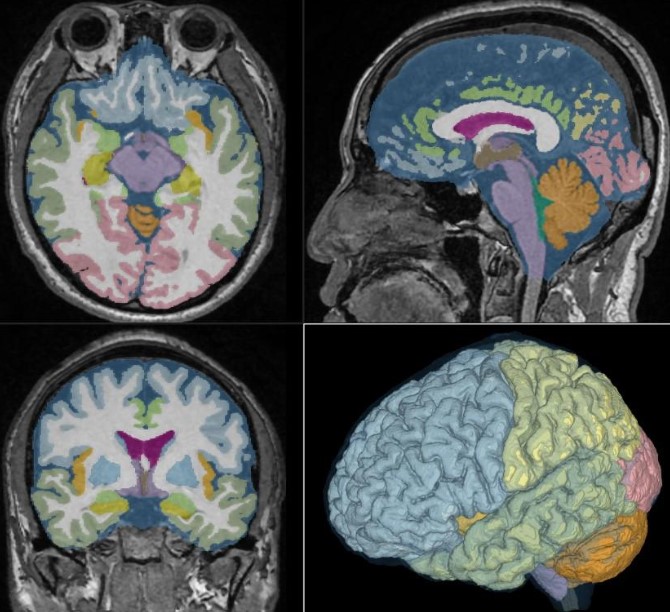
The Synergy of AI: Screening & Diagnostics on Steroids!
3/05/2024
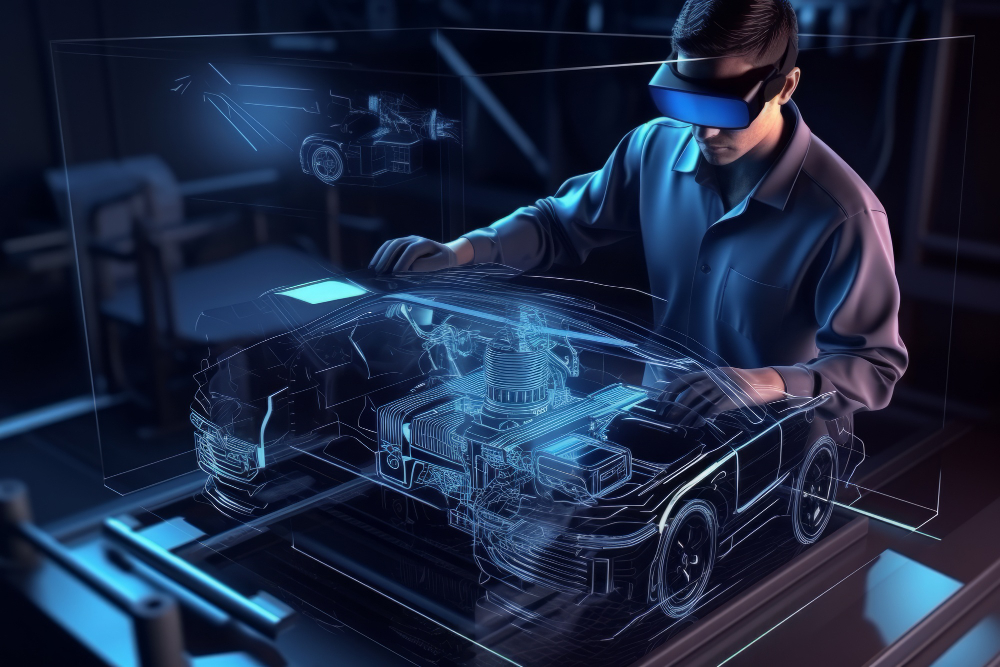
Enhancing Manufacturing Efficiency with Computer Vision
2/05/2024
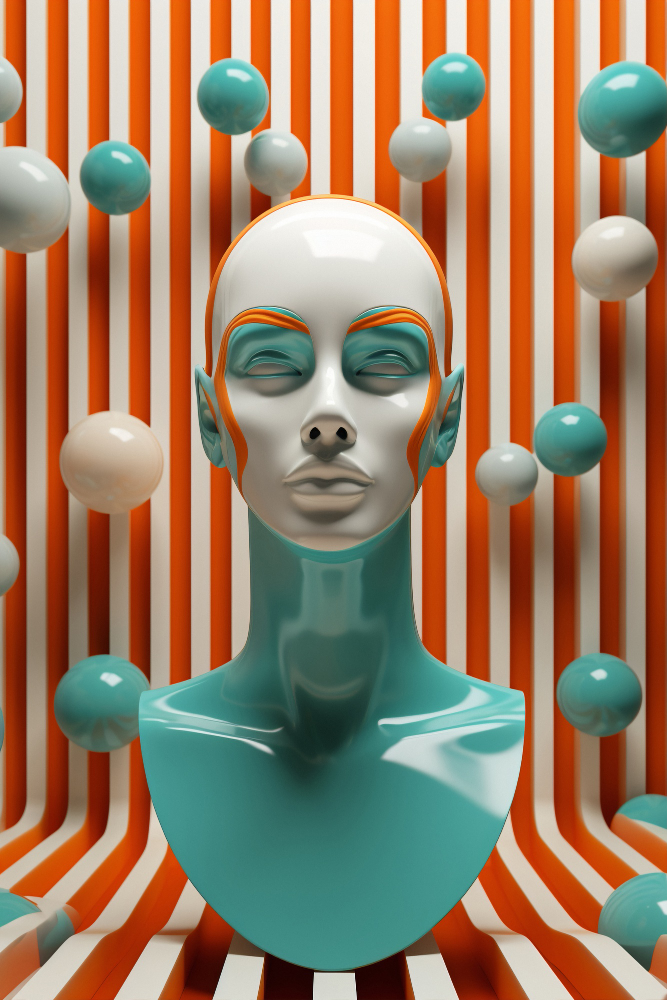
How to Create Content Using AI-Generated 3D Models
30/04/2024
Generative AI Consulting for Business Advancement
29/04/2024
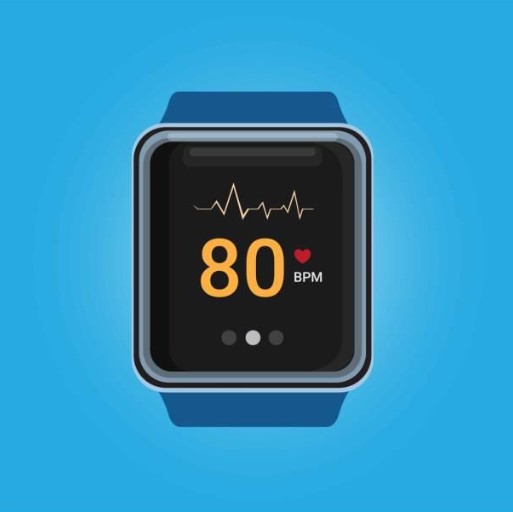
Internet of Medical Things: All Medical Devices Communicating
29/04/2024
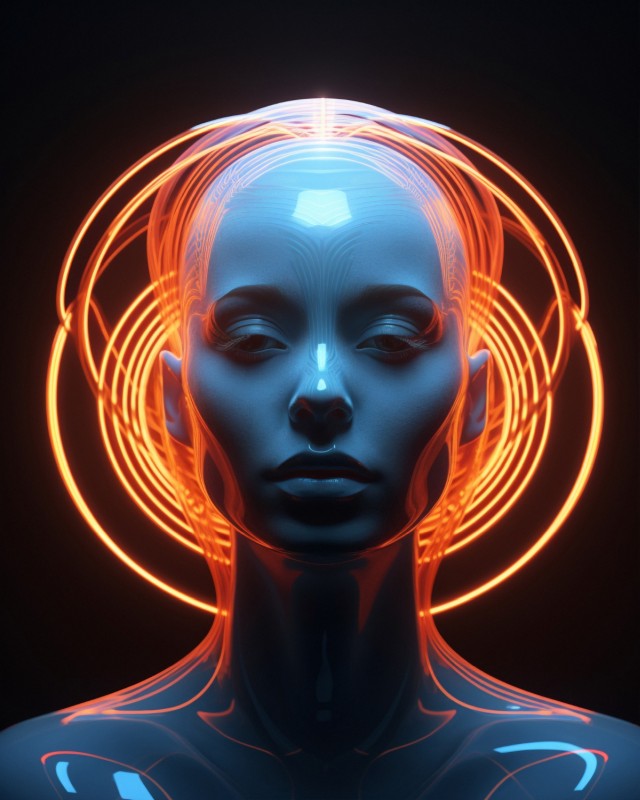
The Potential of Generative AI Consulting Services
26/04/2024
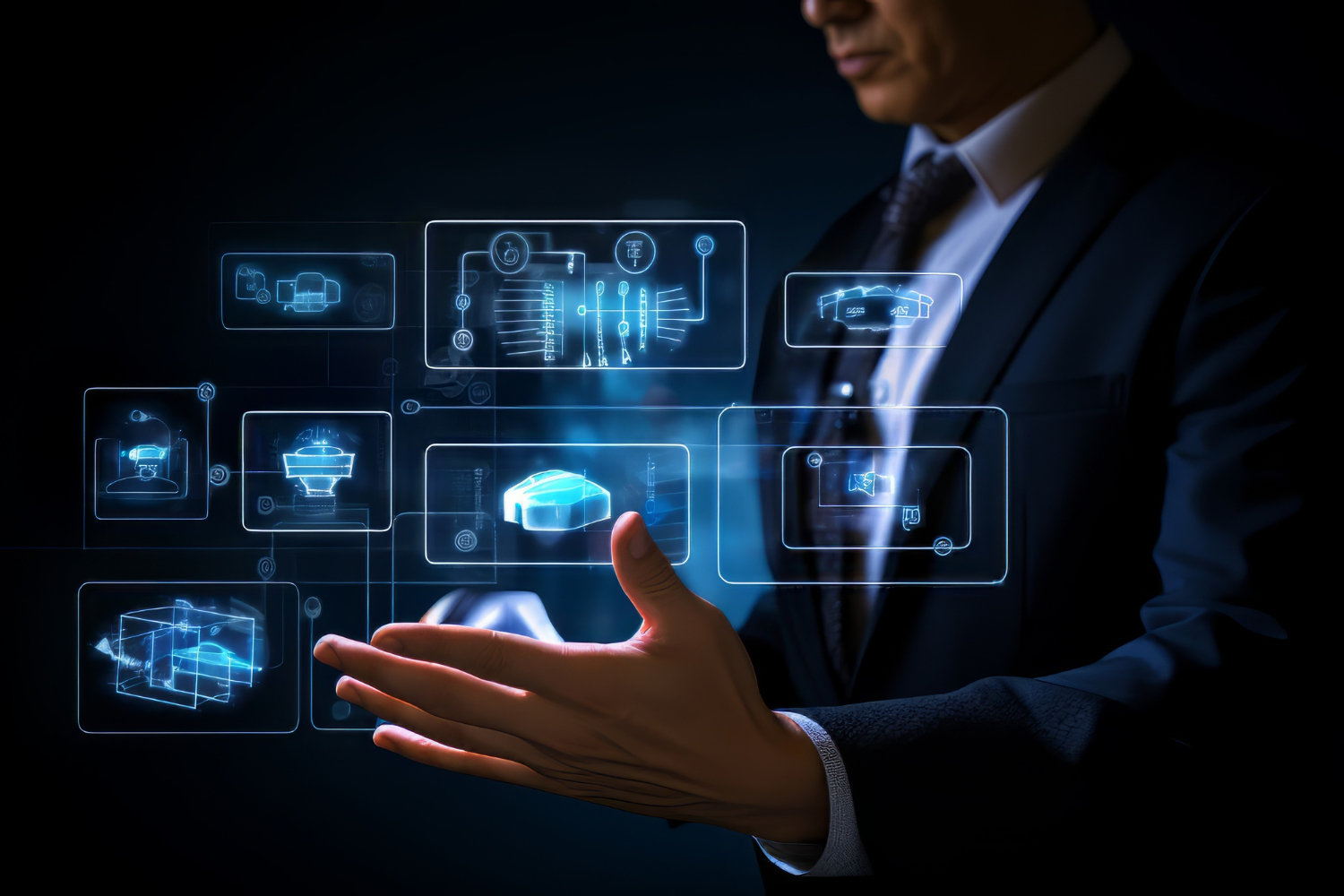
The Impact of Conversational AI on the Insurance Industry
25/04/2024
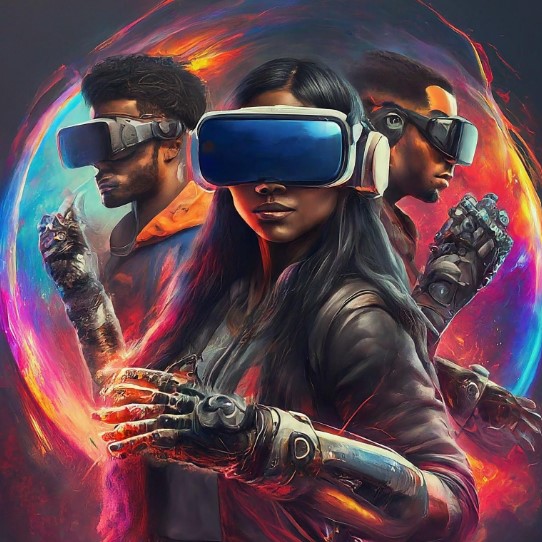
Level Up Your Gaming Experience with AI and AR/VR
25/04/2024
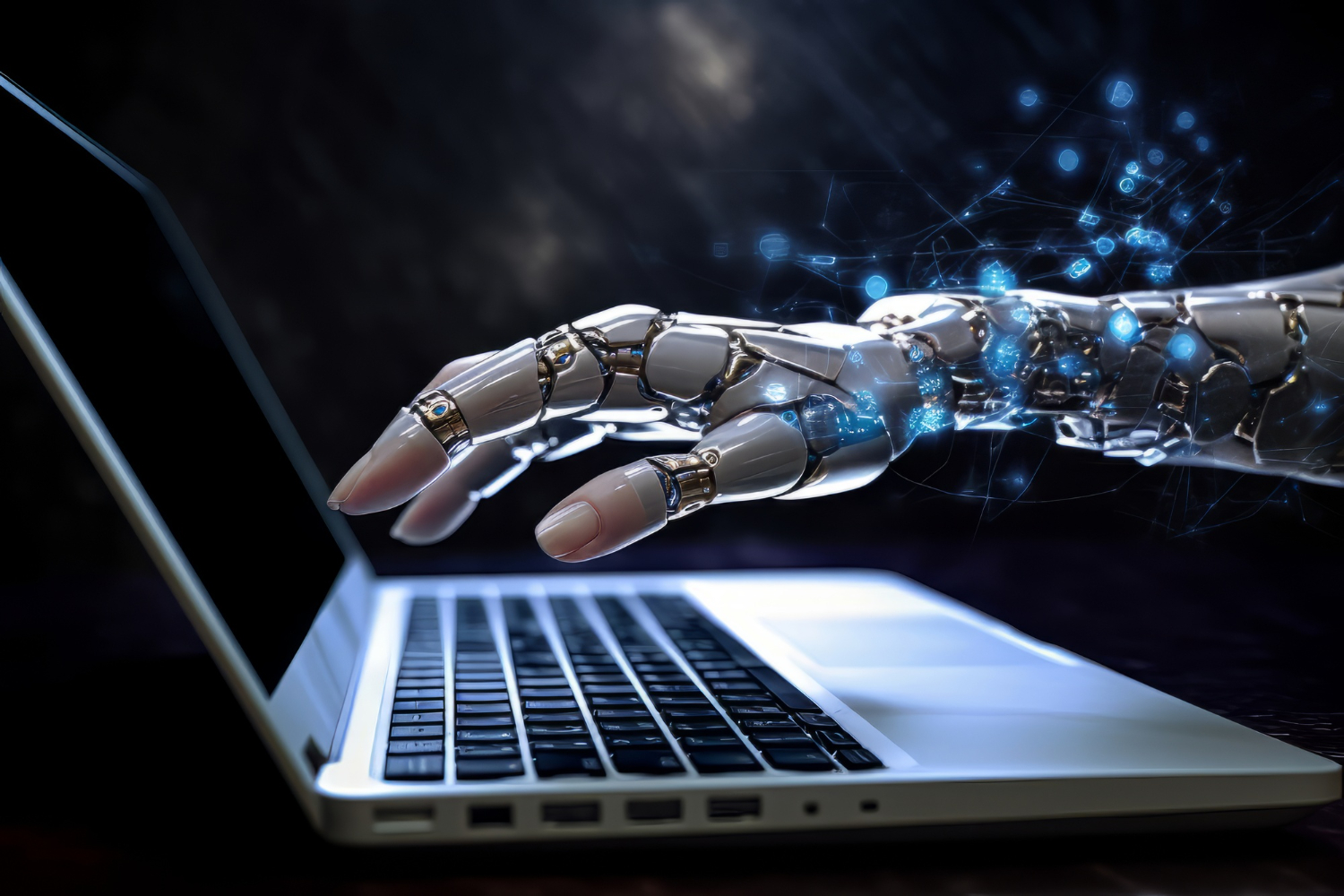
The Ultimate ChatGPT Cheat Sheet: Crafting Effective Prompts
24/04/2024
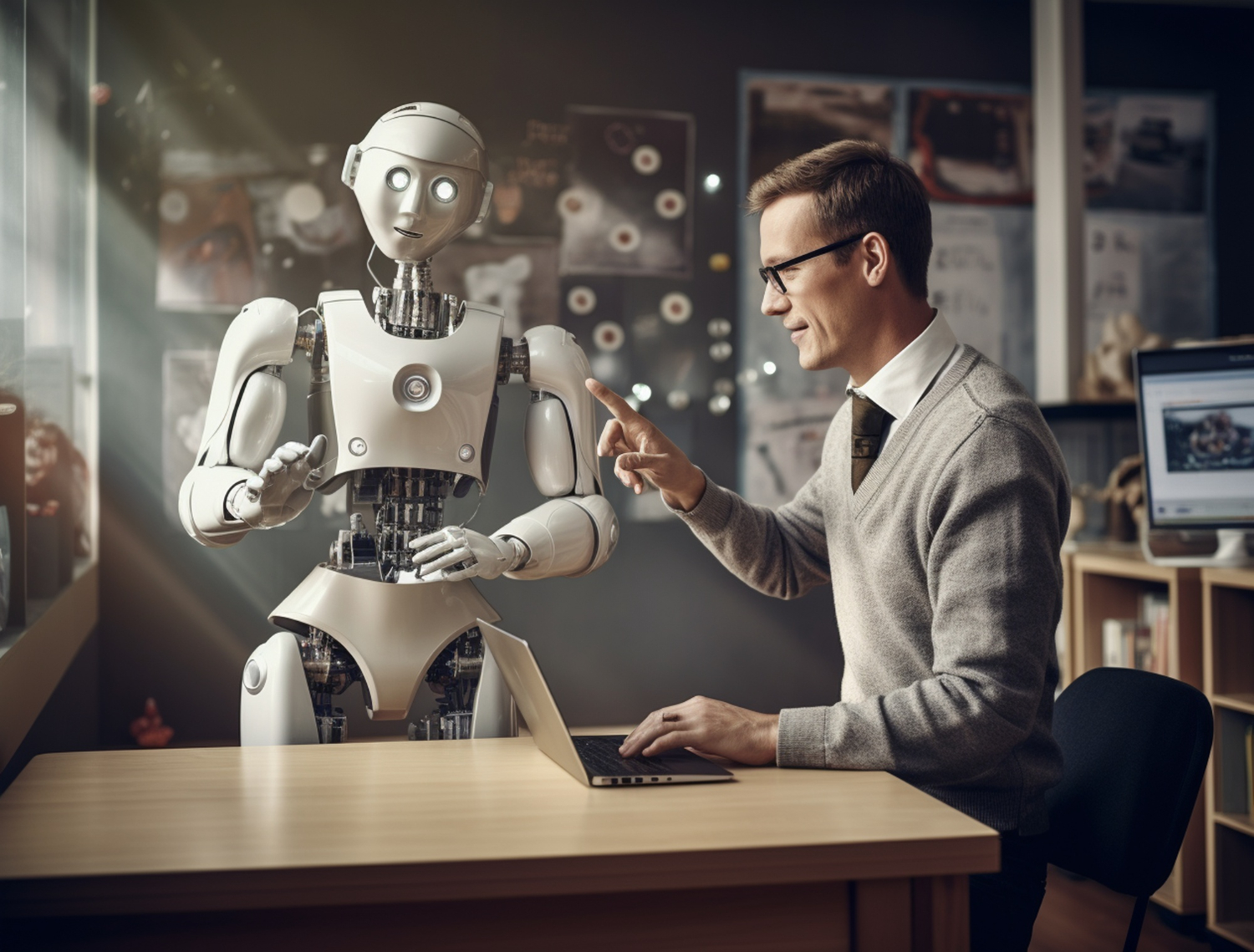
AI Consulting Services: Empowering Businesses with AI
24/04/2024